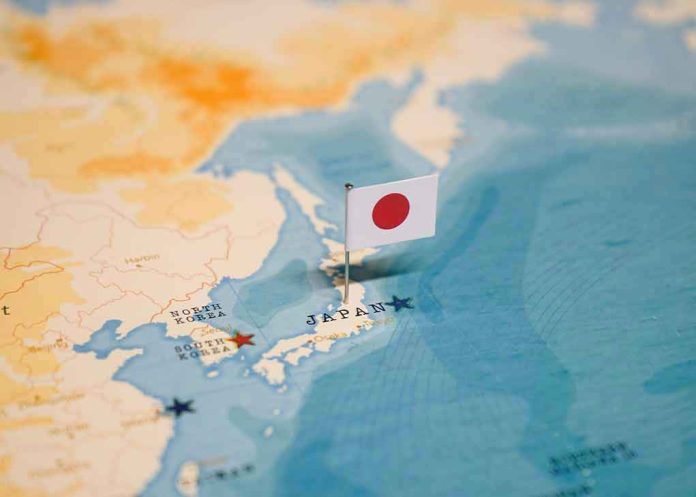
Japan reached a jaw-dropping 21.5 million tourists in just six months of 2025—leaving even veteran sushi chefs and Shinkansen conductors wondering how the story of this record-breaking tourism surge ends, and what it means for the soul (and serenity) of the nation.
At a Glance
- Japan shattered its previous tourism records, hitting 21.5 million visitors in the first half of 2025—a 21% year-on-year leap.
- The surge is rewriting economic forecasts, but not everyone is raising a sake glass; overtourism and local backlash are simmering issues.
- Misinformation, like earthquake rumors, is shaking up where tourists come from, with notable dips from Hong Kong.
- The government’s ambitious new target is 60 million tourists by 2030, sparking debates about rural revitalization and urban overcrowding.
Japan’s Tourism Tsunami: How a Nation Got Swamped—And What Comes Next
Picture this: Shibuya’s fabled scramble crossing packed tighter than a Tokyo subway at rush hour, Kyoto’s bamboo forests echoing with more selfie clicks than birdsong, and weary ramen chefs running out of noodles by noon. The numbers say it all—21.5 million foreign visitors in the first six months of 2025, smashing every previous record and sending statisticians scrambling for new charts. The Japan National Tourism Organization (JNTO) confirmed a 21% year-on-year jump, with June alone clocking in a record-busting 3.4 million arrivals. Pent-up pandemic demand, a weak yen, and irresistible marketing combined to create a perfect storm of wanderlust. Tourists from China, South Korea, Singapore, India, the US, and Germany are leading the charge, even as some markets, like Hong Kong, stall—spooked by viral (and unfounded) earthquake rumors.
Beyond the flashbulbs and festival crowds, the economic impact is enough to make any finance minister weep with joy. Foreign visitor spending hit a staggering 2.5 trillion yen ($16.8 billion) in Q2 alone, up 18% from last year. Airlines, hotels, and souvenir shops are counting their blessings—and their yen. But for every happy business owner, there’s a Kyoto local dodging throngs to reach their front door, or a resident of Nara wondering how many deer selfies one park can handle. The government, not content to rest on its (well-trodden) laurels, has upped the ante: a new goal of 60 million tourists a year by 2030, with a pledge to spread visitors beyond the usual hotspots and into Japan’s charming, overlooked corners. Whether that’s a recipe for rural revival or just rural gridlock remains the million-yen question.
The Push, the Pull, and the Earthquake That Wasn’t
Japan’s tourism revival is no accident. After the COVID-19 pandemic forced border closures and decimated the travel sector, reopening in late 2022 unleashed a tidal wave of pent-up wanderlust. The government’s savvy mix of relaxed visa policies, slick international marketing, and a yen-friendly exchange rate worked wonders. But not all news has been cherry blossoms and Fuji sunsets. In the spring of 2025, online rumors of an imminent “big one” earthquake spread like wildfire, especially in Hong Kong, triggering a 33.4% nosedive in arrivals from that region. Authorities and scientists rushed to set the record straight, but the episode highlighted the power of social media to jolt travel trends overnight.
Local governments are also finding their voices—and sometimes, their breaking points. Kyoto, for years a poster child for overtourism, is pioneering new approaches to crowd control and sustainable tourism, while other destinations eye both the opportunities and growing pains of surging visitor numbers. The tourism industry, naturally, is singing a happy tune, lobbying for more investment and friendlier policies. Yet, in the back rooms of city hall and community centers, the debate over how much tourism is too much is only getting louder.
What Happens When the World Comes Knocking?
Short-term, the boom is a bonanza. Restaurants are full, taxis are scarce, and there’s a run on yukatas and Kit Kats in every flavor. But as the yen pours in, cracks are showing. Infrastructure is straining, heritage sites are groaning under foot traffic, and locals are increasingly vocal about the daily disruptions. The government’s answer? Ambitious policies to disperse tourists geographically and seasonally, using everything from influencer campaigns to shiny new rail lines. Whether these efforts can keep the peace—while still hitting that dizzying 60-million-visitor target—is a cliffhanger worthy of a Kabuki drama.
Experts warn that if Japan fails to balance growth with sustainability, it risks joining Venice and Barcelona in the overtourism hall of fame—where local pushback can turn even the friendliest welcome frosty. But there’s also hope: many see a future where rural towns, once depopulated and overlooked, get their day in the sun, and where better planning makes sure everyone—from selfie-taker to shrine keeper—can thrive. The real test will be whether Japan can ride this tourism tsunami without getting washed out to sea.
Sources:
Japan National Tourism Organization (JNTO)





